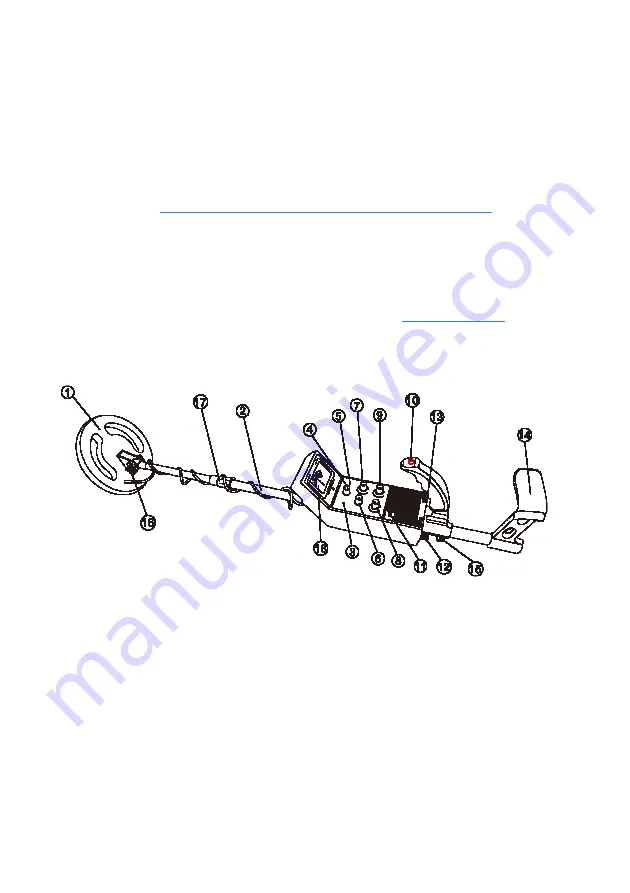
Page 3
8. Acquaint yourself with the terms and definitions used in the following
documents:
(1) "Treasure" contained in the
Treasure Act 1996
and its associated
Code of
Practice
, making sure you understand your responsibilities.
(2)
Advice for Finders of Archaeological Objects
including Treasure 2006.
(3) The voluntary
Code of Practice for Responsible Metal Detecting
to which
the NCMD is an endorsee.
(4) Advice for finders in Scotland:
see http://www.treasuretrovescotland.co.uk/html/finders.asp
9. Remember that when you are out with your metal detector you are an
ambassador for your hobby. Do nothing that might give it a bad name.
10. Never miss an opportunity to explain your hobby to anyone who asks about
it.
If you take your hobby seriously, then we recommend that you should join the
National Council for Metal Detecting: visit its website at www.ncmd.co.uk for more
details and how to join.
IDENTIFYING THE PARTS
1. SEARCH COIL
2. ADJUSTABLE SHAFT
3. RED FERROUS METAL
DETECTOR
4. TUNE ADJUSTER
5. GREEN NON-FERROUS
METAL DETECTOR
6. MODE SELECTOR
7. GROUND CONTROL
8. DISCRIMINATION
9. SENSITIVITY ADJUSTER
10. HANDLE WITH AUTO-TUNE
BUTTON
11. BATTERY TEST
12. VOLUME CONTROL
13. HEADPHONE JACK
14. ARM REST
15. ARM TEST KNOB
16. SEARCH COIL KNOB
17. STEM LOCK NUT
18. METER




























